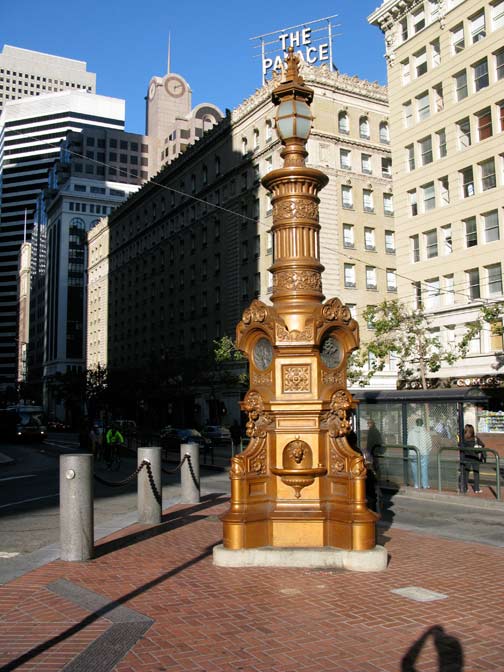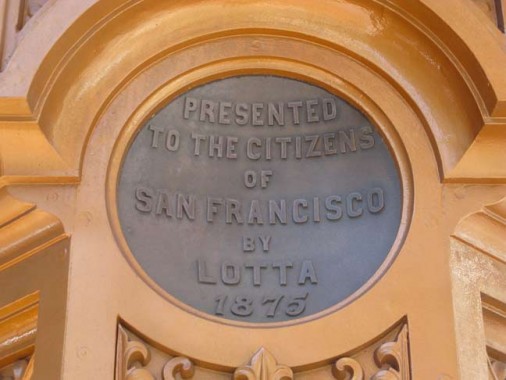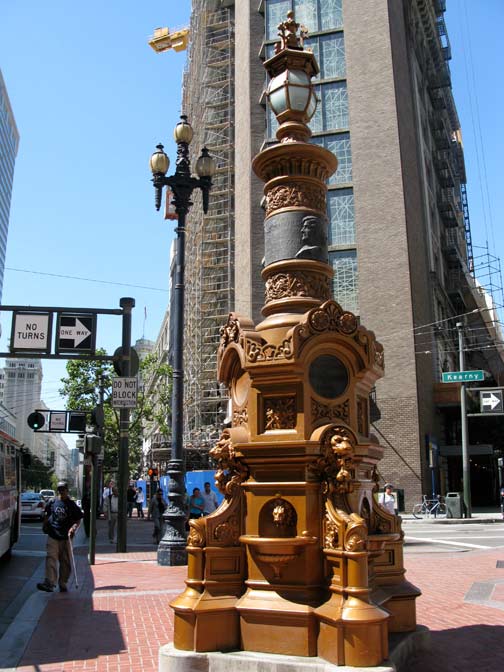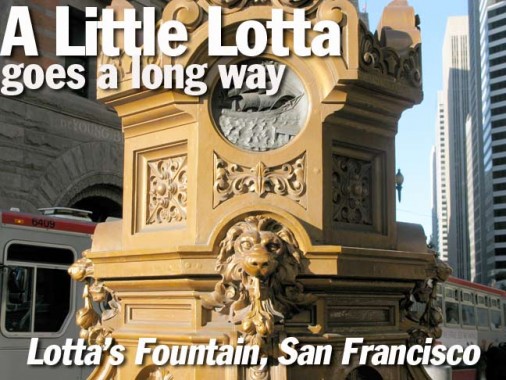
One of the most beloved artifacts in downtown San Francisco is at Market Street where it meets Kearny and Third Streets, where the city’s oldest public monument, Lotta’s Fountain, can be found.
Lotta Crabtree (1847-1924) was a popular singer/actress who began her career in San Fran as a child in the 1850s, her father John having come to the Bay Area during the gold rush. During the 1860s, she migrated to the east coast where she appeared in plays such as The Old Curiosity Shoppe and Uncle Tom’s Cabin, often taking on roles as children due to her diminutive size. She became the highest-paid actress in the country, earning $5,000 per week, and retired in her forties after suffering a fall. Though she was beloved in San Francisco, she spent the last 15 years of her life in Boston and is buried in Woodlawn Cemetery in the Bronx. She had never married. While still 22, she began buying up area real estate and had accumulated a fortune of $4 million by the time of her death in 1924.

Lotta donated this fountain, built to resemble a lighthouse in a play she was appearing in, in 1875. At the dedication ceremony, tanked-up celebrants started a riot that soldiers were called in to quell.

Lotta’s Fountain survived the 1906 Earthquake and beginning in 1924, the year of Lotta’s death, it became the setting for a ceremony commemorating its anniversary and mourning its casualties.
Affixed to the shaft is a plaque that recalls opera singer Luisa Tetrazzini‘s 12/24/1910 appearance for a free concert at the fountain, which no longer dispenses water.
A short walk down Market Street on its west side between Fourth and Fifth Streets, and you will encounter the Albert S. Samuels Clock, which its plaque explains is “one of the finest street clocks in America.” Samuels, a watchmaker, moved his business into the then-new Lincoln Building (897 Market) in 1909, and his clock was built there in 1915, the year of the Panama-Pacific International Exposition.
Engineer Joseph Mayer of Seattle built the clock with glass panels in the base that allow passersby to see the clockworks. Samuels moved to 856 Market in 1943 and took the clock with him to the new location. Samuels died in 1973, and the clock fell into disrepair and was displaced by construction for some years. It was restored to service in 2000.
Photographed 8/2008; page written 7/26/12
